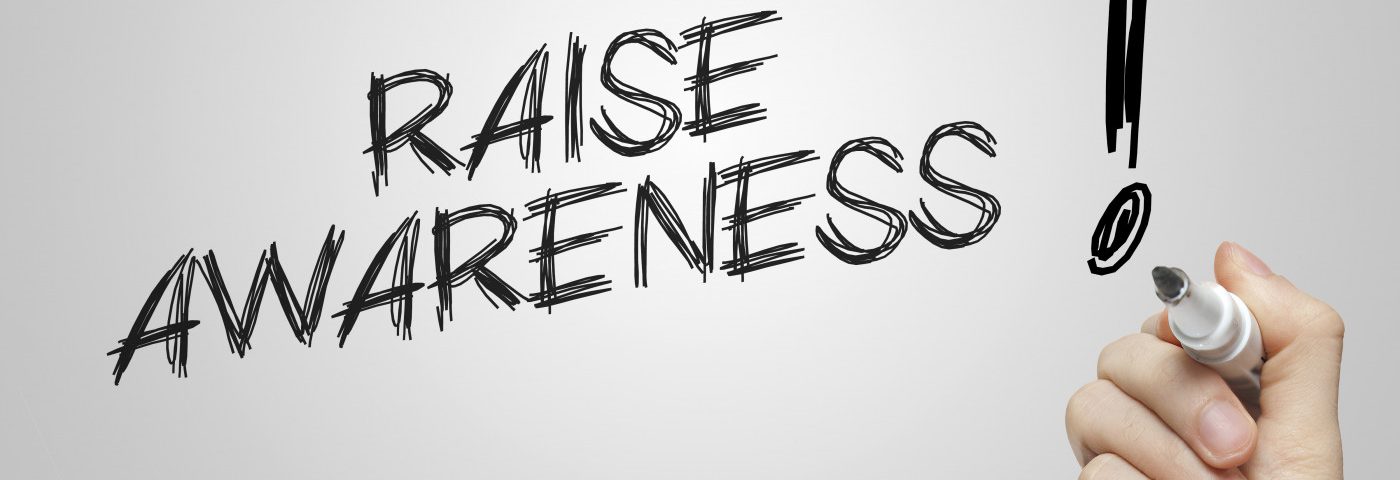Turning Huntington’s Disease Awareness into Action

May is Huntington’s Disease Awareness Month in many parts of the world. It’s an excellent opportunity for those of us in the Huntington’s disease (HD) community to reach people who wouldn’t typically encounter this disease and share some understanding about the condition.
There are many ways to raise awareness and participate in fundraising activities. Whether it’s lighting up Niagara Falls in blue and purple, wearing an HD ribbon, or posting about HD on social media, the options are endless.
But do these awareness campaigns make a difference? It can seem that every month of the year is full with awareness activities for various issues, and people can feel bombarded with information and requests for donations.
So, how do we ensure we are heard amid the other causes vying for attention? Are we already doing a great job? How can we evaluate the effectiveness of our activities? Let’s talk about it.
Turn awareness into action
In their thought-provoking essay, “Stop Raising Awareness Already,” published in the Stanford Social Innovation Review, Ann Christiano and Annie Neimand discuss the “four essential elements to creating a successful public interest communications campaign”:
- Target your audience as narrowly as possible.
- Create compelling messages with clear calls to action.
- Develop a theory of change.
- Use the right messenger.
Let’s take these ideas and apply them to our awareness activities.
Target audience
When it comes to raising awareness about Huntington’s disease, the target audience is clear: individuals, families, and friends affected by HD. These are the people who are most likely to act on our campaign message. What action do we want them to take? And what’s our goal?
Answer: Our goal is to raise more money for research and community support services.
The people directly affected by Huntington’s disease are our target audience. I understand that this can seem a little counterintuitive. You may ask, “Isn’t the point of raising awareness, to make people aware of something they don’t already know about?” Well, yes, that’s never bad. But remember the goal is fundraising. What audience is most likely to take action when it comes to Huntington’s disease? That’s right — those of us in the community. For others, awareness campaigns are often mere noise in their Facebook feed.
Compelling messages
A few years ago, the Huntington Society of Canada released some public service announcements consisting of testimonials from individuals and families affected by HD. These short videos are powerful and emotional.
It’s not uncommon to feel alone in the journey. Watching the videos’ participants sharing experiences and emotions that mirrored our own was hugely effective and memorable.
The call to action at the end of these videos is a link to the Huntington Society of Canada’s website, where the viewer is invited to donate.
A theory of change
Creating a roadmap and identifying what changes can be made to achieve the overall goal of the awareness campaign is crucial, according to the authors of the aforementioned essay. Reviewing past activities and looking at what worked and what didn’t can also be helpful.
Keeping an open mind to new ideas and having a clear understanding of the issues affecting the community is paramount to determining where changes will have their greatest impact.
The right messenger
Similar to the discussion on developing compelling messages, having individuals who are directly affected by Huntington’s disease deliver the public service announcements was key to the campaign’s success.
A target audience will respond more strongly to those they trust, and “whom people trust is very much connected to how people see themselves, their values, and their identities,” write Christiano and Neimand. Without that sense of connection, a person will be less likely to take action. And we want some action!
How are we doing in the HD community?
Christiano and Neimand write that “to move the needle on the issues we care about the most, research and experience both show that we must define actionable and achievable calls to action that will lead a specific group of people to do something they haven’t done before.”
Has the Huntington’s disease community, with its worldwide awareness campaigns, been encouraging our target groups to act to help us reach our goals? From what I’ve seen — and the Huntington Society of Canada public service announcements are a fantastic example — I believe much of what we do is effective.
Our target group is narrow. We have an entire community of compelling stories and messengers. We’re not afraid to use our experience and knowledge of Huntington’s disease and the community to change our approach if we’re not as successful as we’d hoped to be.
I think we’re doing great.
***
Note: Huntington’s Disease News is strictly a news and information website about the disease. It does not provide medical advice, diagnosis, or treatment. This content is not intended to be a substitute for professional medical advice, diagnosis, or treatment. Always seek the advice of your physician or other qualified health provider with any questions you may have regarding a medical condition. Never disregard professional medical advice or delay in seeking it because of something you have read on this website. The opinions expressed in this column are not those of Huntington’s Disease News, or its parent company, Bionews Services, and are intended to spark discussion about issues pertaining to Huntington’s disease.







Leave a comment
Fill in the required fields to post. Your email address will not be published.